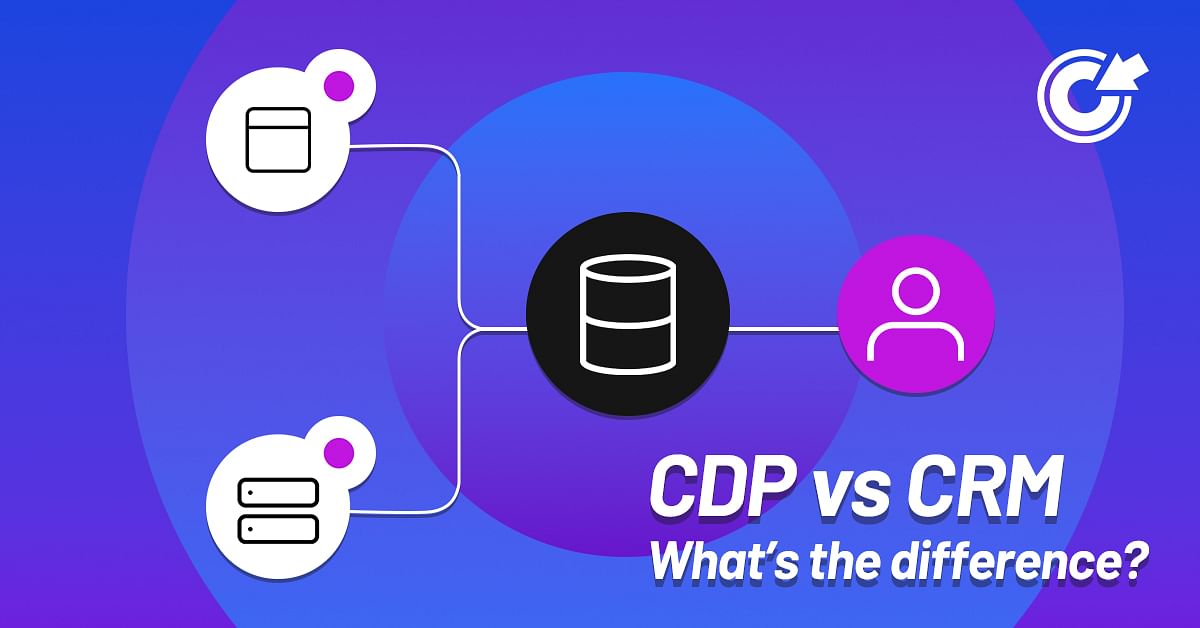CDP vs CRM: What’s the Difference?

CRM vs CDP: What’s the Difference?
In recent years, the number of companies adopting a CDP solution for their business has grown exponentially. With the growing complexity of consumer touchpoints across digital and physical channels, organizations are turning to CDPs to unify fragmented data into a single, centralized customer view. This surge in adoption is driven by the need for real-time insights, improved data privacy compliance, and seamless integration with existing tech stacks.
As a result, CDPs have become a critical tool for marketers and data teams seeking to deliver more relevant and consistent customer experiences in an increasingly competitive landscape. Many companies already have CRM solutions, so what is the difference between a CRM and a CDP?
What is a CRM?
A CRM is a Customer Relationship Management System. CRMs improve business relationships, streamline processes, and enhance customer satisfaction and retention. CRMs are most commonly used to keep track of customers, and often, the status of orders/deals/sales. CRMs store customer data—such as contact details, communication history, and purchase records—in one centralized place, making it easier for sales, marketing, and customer service teams to collaborate. Popular CRM systems include Salesforce and Hubspot.
What is a CDP?
A CDP is a Customer Data Platform. CDPs are designed to provide a complete 360-degree view of each customer by integrating data from websites, mobile apps, social media, email campaigns, and more. With the growing complexity of consumer touchpoints, organizations are turning to CDPs to unify fragmented data into a single, centralized customer view.
This unified data helps businesses analyze behavior, segment audiences, and deliver personalized marketing across channels. CDPs are especially valuable for marketers who want to create consistent, data-driven customer experiences in real time. Popular CDP systems include Tealium, Autominer, and Orbee.
How do a CRM and CDP Differ?
The main difference between a CRM (Customer Relationship Management) system and a CDP (Customer Data Platform) lies in what data they collect, how they collect it, and how they’re used. Below is a quick reference of the key differences.
| Feature | CRM | CDP |
|---|---|---|
| Used By | Sales, Marketing, Support Teams | Marketing, Analytics, Data Teams |
| Focus | Managing customer relationships | Building unified customer profiles and personalized marketing |
| Personalized Insights | Limited | Real-time, advanced insights |
| Data Source | Known users (often manually entered) | Known users, anonymous users, de-anonymized data from multiple systems |
| Data Entry | Manual entry, first-party | Automated entries from multiple systems |
Demand for CDP Services
Several companies that have traditionally offered their clients CDP software have expanded their services and technology to offer CDP services. Some industry movers are Adobe, Salesforce, Oracle, and Microsoft–Dynamics 365 Customer Insights.
Why Do I Need a CDP?
Do you need unified data and want to supercharge your marketing? If so, you need a CDP! With a Customer Data Platform (CDP), you get a cleaner picture of your customers across all touchpoints. Here's why a CDP could be a good move:
Unified Customer View
CDPs collect data from multiple sources (website, app, CRM, email, etc.) and create a single customer profile. That means no more fragmented data or duplicate marketing deliveries—just one clear, complete view of each customer.
What Can My Marketing Team Do with a CDP?
Better Marketing Personalization
With the CDP’s unified data, you can segment your audience more effectively and deliver hyper-personalized content across channels—email, ads, site content, etc.
Improved Campaign Performance
Being able to segment your audiences based on behaviors and life cycles means you can now run smarter campaigns that actually convert—less guessing, more ROI.
Eliminate Wasted Ad Spend
With a CDP, you can also exclude or suppress certain users who take specific actions, like previous purchases, for example. This helps eliminate the chance of spending on audiences that are less likely to convert—improving overall ROI.
CRM vs CDP: CDPs are the Future
While there are many CDP options to choose from, one thing is certain—if you want to remain competitive, you should consider investing in one. A CDP will help you solve key data challenges and drive smarter, more effective marketing strategies.
Click Here Digital works directly with several CDP companies to integrate customer data into various marketing channels and tactics, including email, programmatic, and Google and Meta platforms.
Ready to Talk Strategy?
Let’s discuss how your business can benefit from a smarter data marketing approach with a CDP.
Call Us Now Contact Our Team
Contact us today and watch your business grow.
Ready to take your marketing strategy to a new level?
We'd love to hear from you.
